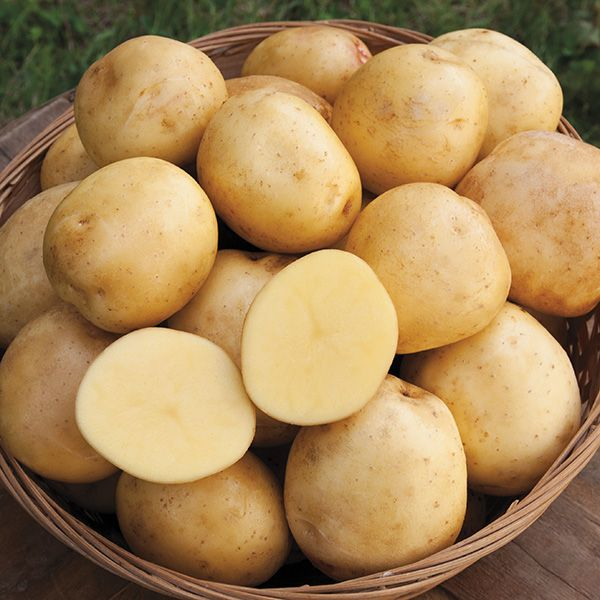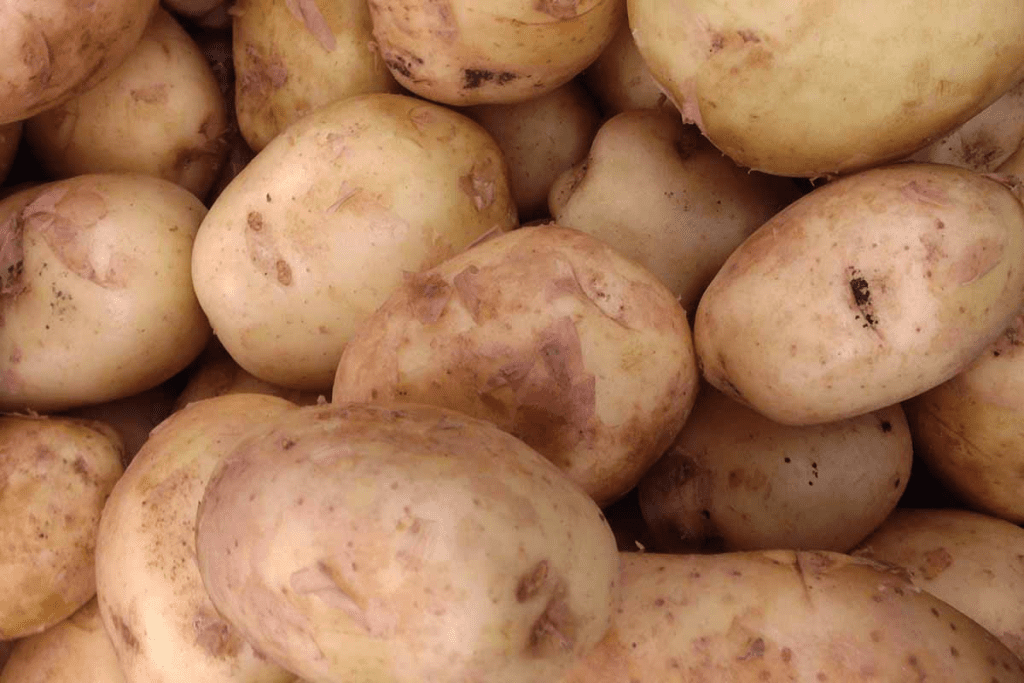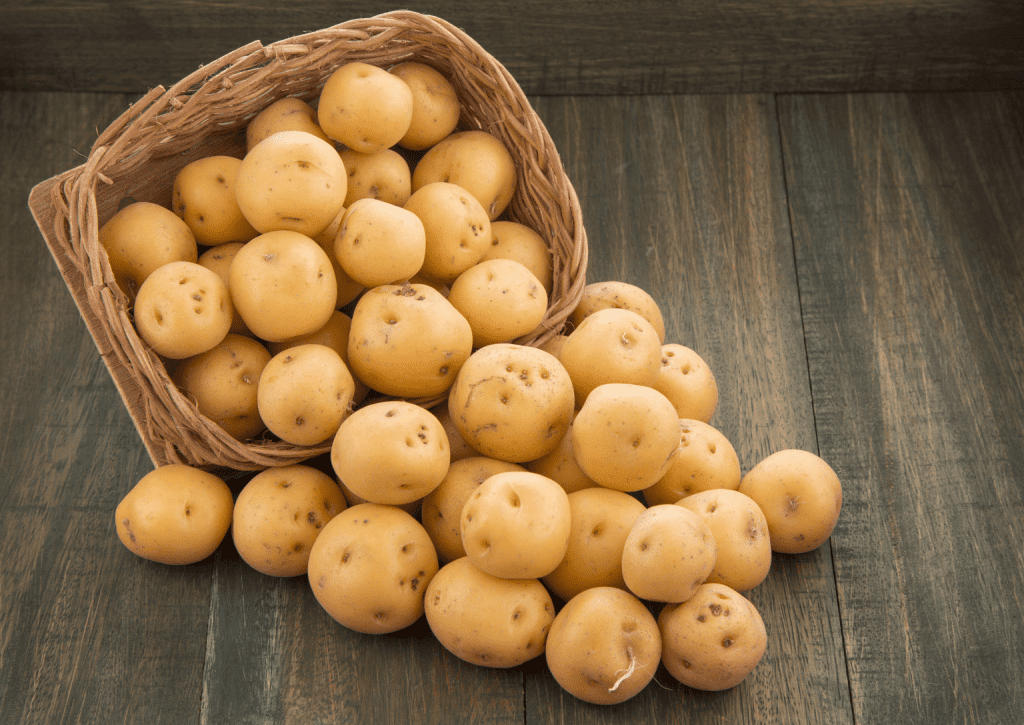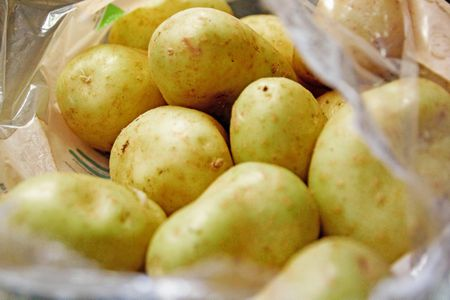Potatoes are a kitchen staple—versatile, delicious, and essential for countless dishes. But keeping them fresh can sometimes be tricky. Without the right storage, potatoes can start to sprout, shrivel, or worse, develop toxins that make them inedible. This guide will walk you through practical methods to keep your potatoes fresher for longer. Let’s dive in and learn the best way to store your potatoes, so they’re always ready when you are.

Why Proper Potato Storage Matters
When potatoes are stored improperly, they’re at risk of sprouting, developing green patches, or growing mold. The greenish tint often seen on improperly stored potatoes comes from chlorophyll but can signal the presence of solanine—a natural toxin. Solanine not only gives potatoes a bitter taste but, if consumed in large quantities, can be harmful. With the right techniques, you can avoid these issues and enjoy your potatoes at their freshest.
Select Quality Potatoes for Storage
The foundation of good potato storage starts at the selection stage. To keep your potatoes fresh longer, it’s important to choose quality spuds.
- Opt for Firm Potatoes: Look for potatoes that feel firm and smooth. Avoid those with soft spots, cuts, or bruises, as these imperfections can lead to faster spoilage.
- Avoid Sprouted or Green Potatoes: If a potato has started sprouting or has a greenish hue, it’s best to leave it behind. These potatoes already have higher levels of solanine and are likely past their prime.
When you start with fresh, healthy potatoes, you’re setting yourself up for successful long-term storage.
Do Not Wash Potatoes Before Storing Them
It might seem natural to want to wash off any dirt, but moisture is a potato’s enemy when it comes to storage.
- Keep Them Dry: Moisture accelerates mold and bacterial growth, which can make potatoes go bad faster. Brush off any soil or debris instead of washing them.
- Wash Right Before Use: Wait until you’re ready to cook with them to wash the potatoes. This will prevent any unnecessary moisture from getting trapped in storage.
By avoiding pre-storage washing, you’re reducing the risk of premature spoilage and keeping your potatoes dry, which is essential for long shelf life.
Maintain the Perfect Temperature for Potatoes
Temperature plays a big role in potato freshness. Storing them in an area that’s too warm or too cold can alter their taste and texture.

- Keep It Cool, Not Cold: Ideally, store your potatoes at a temperature between 45°F and 50°F (7°C to 10°C). These cool conditions slow down sprouting without compromising the potato’s texture or flavor.
- Avoid Refrigeration: While the refrigerator might seem like a safe choice, it’s actually too cold for potatoes. Low temperatures convert the potato starch into sugars, resulting in an overly sweet taste and a gritty texture when cooked.
A cool, dry, and moderately warm storage area will keep your potatoes fresh without compromising flavor or texture.
Choose the Right Storage Container for Airflow
Proper airflow is another important factor for potato storage. Without it, moisture can build up, leading to rot and mold.
- Opt for Breathable Containers: Store your potatoes in a well-ventilated container like a paper bag, cardboard box, or basket. These options allow air to circulate while keeping excess moisture away.
- Avoid Plastic Bags: Plastic bags are often too airtight and can trap moisture, which encourages rotting. If you only have plastic, poke a few holes in it to create some ventilation.
Keeping potatoes in containers that allow airflow will help them stay fresh and dry for a longer period.

Limit Light Exposure to Prevent Green Patches
Exposure to light—especially direct sunlight—can cause potatoes to turn green and produce solanine.
- Choose a Dark Storage Spot: To avoid this, store potatoes in a dark place, like a pantry, cupboard, or even a basement. Avoid any area that gets direct sunlight, as this can cause greening and bitterness.
- Cover with a Cloth, if Necessary: If you don’t have a fully dark spot, covering the container with a cloth can reduce light exposure.
Shielding potatoes from light will keep them from developing those unpleasant green spots and ensure they’re always ready to eat.
Keep Potatoes Away from Other Produce
Potatoes can be sensitive to the gases emitted by certain fruits and vegetables, which can hasten the sprouting process.
- Separate from Ethylene Producers: Certain produce items, like onions, apples, and bananas, release ethylene gas, which can cause potatoes to ripen and sprout faster. For this reason, potatoes are best stored in their own area, separate from other produce.
- Use a Designated Storage Spot: Creating a designated potato storage space prevents ethylene cross-contamination and keeps potatoes fresher.
Isolating your potatoes from ethylene-releasing produce will help extend their freshness and keep them free from premature sprouts.
Regularly Check Stored Potatoes for Spoilage
Even with the best storage practices, it’s essential to check on your potatoes regularly. This way, you can catch any signs of spoilage early and prevent one bad potato from spoiling the rest.
- Inspect Weekly: Look for signs of sprouting, softness, dark spots, or an off smell. Remove any potatoes that show signs of spoilage to prevent them from affecting the others.
- Rotate Your Stock: Use older potatoes first and keep fresher ones for later. This rotation ensures that you’re always using potatoes at their peak and reduces waste.
Staying vigilant with regular checks keeps your potato stash in top shape, so you’re never caught off guard by a spoiled spud.

Adjust for Climate When Storing Potatoes
Different climates require different potato storage strategies. If you live in a humid or dry area, a few adjustments may be necessary.
- In Humid Climates: High humidity can be tricky for potato storage, as it encourages mold. Consider using a dehumidifier, or add desiccants like silica gel packets to your storage area to absorb excess moisture.
- In Dry Climates: Extremely dry climates can cause potatoes to shrivel. In this case, store them in a slightly more humid area, such as a pantry or cupboard that’s away from heaters.
Tweaking your storage methods to suit your climate will ensure your potatoes remain fresh regardless of your local weather conditions.
Conclusion: Storing Potatoes for Lasting Freshness
Keeping potatoes fresh is all about finding the right balance of cool temperatures, darkness, ventilation, and dryness. By following these simple but effective storage tips, you can enjoy your potatoes longer and cut down on waste. Select quality potatoes, keep them dry, store them in a cool, dark spot with proper ventilation, and separate them from ethylene-producing produce. With regular checks, a little extra care, and a few climate-specific tweaks, you’ll always have fresh, tasty potatoes ready for your next meal. Proper storage makes all the difference, ensuring your potatoes remain a reliable and delicious staple in your kitchen.


